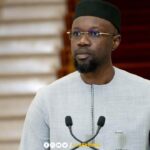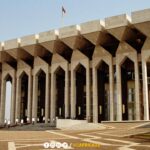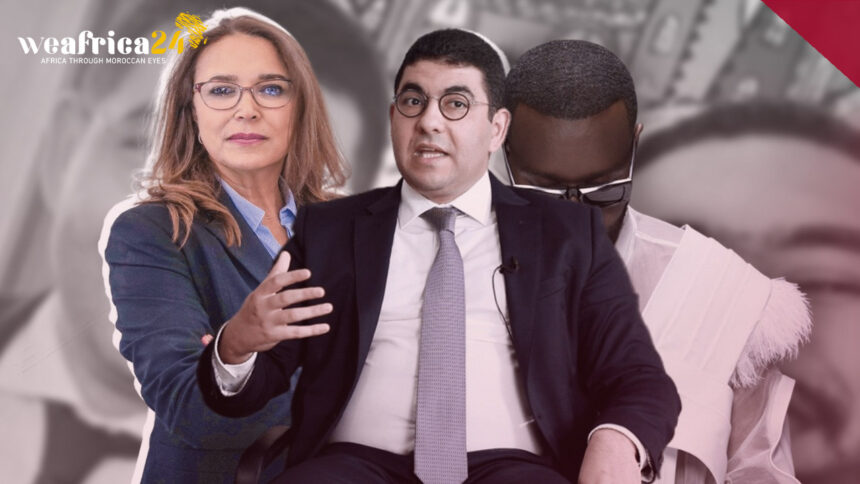No doubt about it, rap music has taken the world by storm, and Morocco is no exception to this cultural revolution. Moroccan rap artists have seized the spotlight, gracing major global events and joining forces with acclaimed international rap maestros to create awe-inspiring artistic endeavors. Their undeniable talent and magnetic presence have elevated the Moroccan rap scene to new heights, leaving an indelible mark on the music industry worldwide.
Rap Scene in Morocco: Notable Progress
The remarkable progress witnessed in rap music globally, including the scene in Morocco, owes much to the rapid advancements in technology and the advent of sound enhancements since the late 1990s and early 2000s. These innovations encompass a range of audio processing tools, such as the widely used “Auto-Tune”, which have played a significant role in shaping the sonic landscape of rap music. These advancements have empowered artists to push the boundaries of creative expression and unlock new realms of musical possibilities.
The Artistic Influence of Auto-Tune on Contemporary Rap
In recent years, a new wave of rap artists has emerged, wielding Auto-Tune as a powerful tool to shape their musical soundscapes. These artists have harnessed the expressive capabilities of this audio-processing technology to craft innovative melodies and atmospheric vocal effects that resonate with audiences worldwide. The integration of Auto-Tune has become a defining characteristic of their musical style, allowing for intricate pitch correction, harmonization, and the creation of unique vocal textures. This creative use of Auto-Tune has sparked debate and divided opinions within the rap community, with some lauding its artistic ingenuity and others questioning its authenticity. Nevertheless, there is no denying the impact of these Auto-Tune-infused rap artists, who continue to push boundaries, redefine the genre, and captivate listeners with their distinctive and compelling musical expressions.
Auto-Tune as a Catalyst for Musical Innovation
In the realms of contemporary music, luminaries such as Gims, PNL, and the renowned Booba have become synonymous with a distinctive artistic approach, regularly embracing the utilization of cutting-edge software, namely Auto-Tune, to embellish their vocal prowess. Beyond its traditional role of rectifying pitch imperfections, Auto-Tune has emerged as a potent tool for sonic exploration, allowing these visionary artists to craft innovative soundscapes that captivate and inspire. By skillfully blending this technology with their artistic vision, they transcend conventional boundaries, paving the way for a new era of audial possibilities.
Restrictive Measure in Music Support Program Raises Concerns Over Artistic Freedom
In a surprising turn of events, the Ministry of Culture has introduced an unprecedented measure within the current support program for music, singing, performing arts, and choreography. This measure imposes a restrictive condition that prohibits the inclusion of any sound enhancements, such as the popular “Auto-Tune” technology, in songs seeking support. This decision appears to contradict the undeniable technological advancements that have revolutionized the music industry.
Moreover, it raises concerns regarding the exclusion of specific artists, notably rap artists, particularly those belonging to the “trap” style, and other musical genres that heavily rely on sound effects. Such exclusionary measures run counter to the principle of equal opportunities, inhibiting artistic freedom and potentially hindering the diverse and dynamic nature of the music landscape.
This condition is included at a time when rap is represented in the support committee, highlighting the significant influence of rap in the music industry.
In striking contrast, while limitations are imposed on the use of sound enhancements in the music support program, there exists a distinct freedom when it comes to incorporating visual effects in the realm of cinematography. This distinction vividly underscores the boundless creativity and imaginative possibilities that flourish within the realm of filmmaking. Visual effects serve as a vibrant testament to the artistic ingenuity that permeates cinematic works, offering a gateway to mesmerizing visual narratives and captivating storytelling.
However, this juxtaposition inevitably sparks intrigue regarding the divergence in treatment across artistic domains, prompting reflection on the importance of fostering a cohesive and all-encompassing approach that nurtures and celebrates diverse forms of creative expression.
Challenging the Compatibility of Restrictive Measures with Cultural Diversity Commitments
The inclusion of such a condition in the support program blatantly infringes upon the principles enshrined in Articles 6 and 7 of the UNESCO Convention on the Protection and Promotion of the Diversity of Cultural Expressions of 2005, which Morocco ratified a decade ago (2013). These pivotal articles were designed to uphold and foster cultural diversity, as well as to encourage the emergence of new expressions using providing “general financial assistance”. The condition’s imposition raises concerns about the compatibility of such measures with Morocco’s commitment to preserving and promoting cultural diversity as outlined in this significant international agreement. It beckons a critical examination of the need to align policies with the core tenets of cultural preservation and to ensure equal opportunities for all forms of creative expression to flourish.
Artistic Expert Questions Restrictive Measures on Autotune
In a statement to “WEAFRICA24”, Hicham Abqari, a distinguished artistic expert, who holds the esteemed position of President at the Moroccan Association for Music Professions, said: “To be precise, the Autotune, as a technical audio effect used in the studio, is not exclusively used in rap music. Particularly in Morocco, it is widely employed in the genre of Raï”.
“The quality of the studio recording is not the same as the live performance quality on stage. Therefore, Autotune is frequently used during studio recordings, not only in rap but also in other musical genres such as Raï, folk, and mainstream songs. It is a common practice to use Autotune, and there is no harm in doing so”, added abqari.
The same source stated that: “The issue I have is why this condition was specifically imposed. And Why should rap artists not be allowed to use this tool? Should they not record in the studio at all? Autotune is considered a tool to enhance the quality of a song, but it is not limited to rap music alone”.
“Up until now, I still don’t understand the rationale behind this condition. Technically speaking, we know that Autotune is merely a technology and has no inherent negative impact. It should be surpassed for the sake of quality. Each artist has their preferences on how to use it, and it does not determine the overall quality of the song. This condition seems arbitrary, as it is unclear how it was imposed, as the committee does not have relevance to the matter”, Hicham Abqari confirmed to “WEAFRICA24”.
the introduction of restrictive measures in the music support program, specifically targeting the use of Autotune and other sound enhancements, has sparked controversy and raised concerns about artistic freedom and cultural diversity. The remarks made by Hicham Abqari, President of the Moroccan Association for Music Professions, shed light on the broader implications of such measures. It is evident that Autotune is not exclusive to rap music and has been widely utilized in various genres, including Raï, folk, and mainstream songs, to enhance studio recordings. The rationale behind the imposition of this condition remains unclear, and questions arise regarding its compatibility with international agreements on cultural diversity and equal opportunities. As discussions continue, it is essential to strike a balance between quality control and the freedom for artists to explore innovative musical techniques and express themselves authentically.
A source from the Moroccan Ministry of Culture clarifies
A reliable source from the Directorate of Arts, a division of the Moroccan Ministry of Culture, has confirmed to “WEAFRICA24” that Mehdi Bensaid, the Minister of Culture, is actively engaged in addressing concerns related to the publishing industry. The source further reveals that Bensaid has initiated discussions with key stakeholders within the sector to thoroughly examine the “Auto-tune” mentioned in the written inquiry.
Additionally, the source highlights that Bensaid was previously unaware of the specific matter of audio modifications. This lack of awareness is attributed to his extensive focus on monitoring the international art scene, where he acknowledges the prevalent use of sound effects in various significant artistic endeavors, including those involving renowned rap artists and musicians from diverse genres.
Furthermore, the spokesperson reiterates that Minister Bensaid is committed to providing a comprehensive response to the written inquiry submitted by the parliamentarian. He is actively pursuing this matter, determined to find a resolution that ensures the exclusion of several artists from receiving musical support is addressed effectively.
“WEAFRICA24” also attempted to contact the Minister of Culture, Mehdi Ben Said, but his phone rang continuously without an answer.







